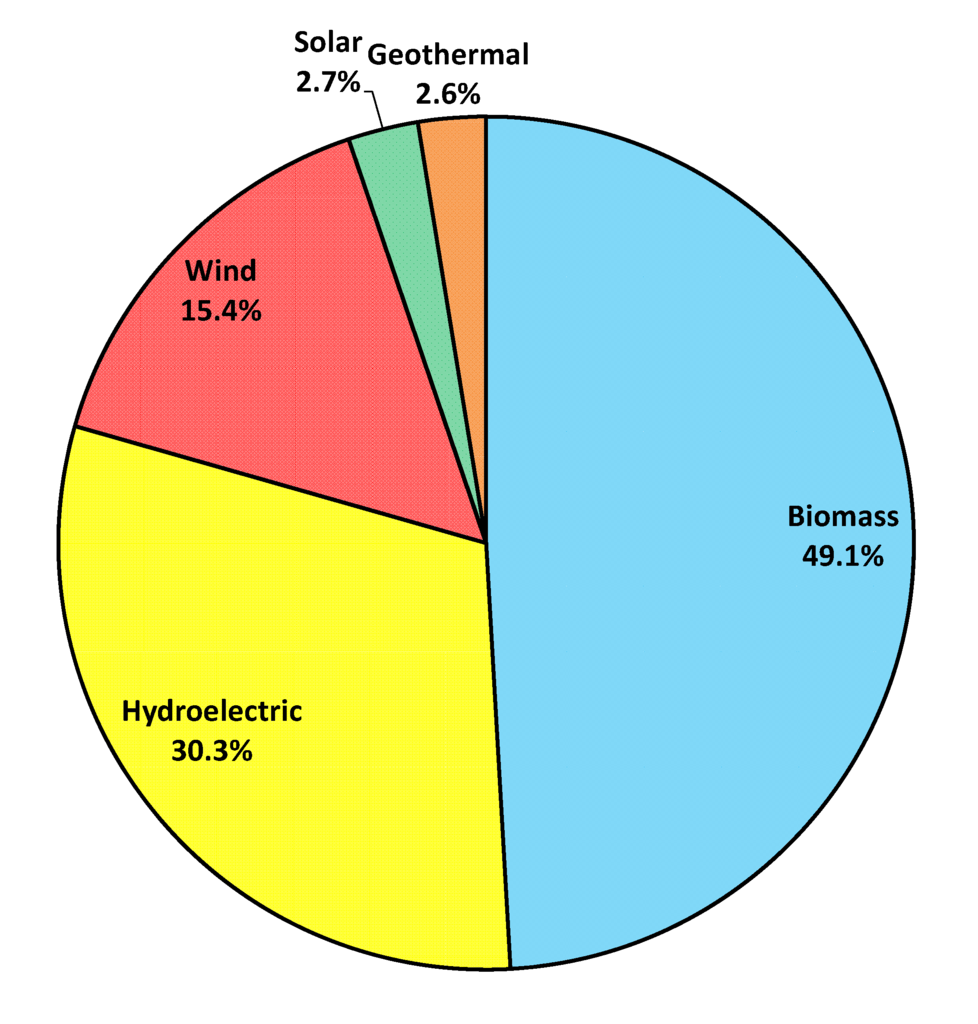What is the most popular form of renewable energy in the US?

Renewable energy has become a hot topic in recent years, as the world seeks to reduce its dependence on fossil fuels and combat climate change. In the United States, various forms of renewable energy are gaining traction, but what is the most popular choice?
The Importance of Renewable Energy
Renewable energy sources are crucial for a sustainable future. Unlike fossil fuels, which are finite and release harmful greenhouse gases when burned, renewable energy is clean, abundant, and replenishable. By harnessing renewable sources, we can reduce carbon emissions and mitigate the impacts of climate change.
Types of Renewable Energy Sources
There are several types of renewable energy sources widely used in the US:
- Solar Power: Solar panels convert sunlight into electricity, making it one of the fastest-growing renewable energy sources in the country.
- Wind Energy: Wind turbines harness the power of wind to generate electricity, and it is rapidly gaining popularity across many states.
- Hydropower: By utilizing the energy of moving water, hydropower generates electricity and plays a significant role in the US renewable energy mix.
- Biomass Energy: Biomass, such as organic waste and wood pellets, can be burned to produce heat or electricity, offering a sustainable alternative to fossil fuels.
- Geothermal Energy: Geothermal power plants tap into the Earth's natural heat to generate electricity and provide heating and cooling solutions.
The Rise of Solar Power in the US
Solar power has seen remarkable growth in the US, and it is now the most popular form of renewable energy. The declining costs of solar panels, combined with government incentives and increased public awareness, have contributed to its widespread adoption. Many households and businesses are installing solar panels on their rooftops, taking advantage of the abundant sunlight.
The Growing Popularity of Wind Energy
Wind energy is also on the rise in the US. The country has vast wind resources, especially in states like Texas, Iowa, and California. Wind turbines are becoming a common sight, both onshore and offshore, as they offer a reliable and clean source of electricity. The development of larger and more efficient turbines has further propelled the growth of wind energy.
The Advantages of Hydropower
Hydropower has long been a significant contributor to the US energy landscape. The country's rivers and dams provide ample opportunities for hydropower generation. It is a reliable and flexible source of electricity, capable of meeting peak demand. Hydropower also offers additional benefits such as flood control, irrigation, and recreational opportunities.
Biomass Energy: A Sustainable Choice
Biomass energy utilizes organic matter to produce heat, electricity, or biofuels. It helps divert waste from landfills and reduces greenhouse gas emissions. Biomass power plants can be found across the country, utilizing agricultural residues, wood waste, and dedicated energy crops to generate renewable energy.
Geothermal Energy: Harnessing the Earth's Heat
Geothermal energy taps into the Earth's natural heat, providing a reliable and constant source of power. Geothermal power plants can be found in regions with high geothermal activity, such as California, Nevada, and Oregon. They play a vital role in reducing greenhouse gas emissions and providing stable electricity generation.
Conclusion
In conclusion, while there are various forms of renewable energy in the US, solar power has emerged as the most popular choice. With its declining costs, widespread availability, and numerous environmental benefits, solar energy is leading the way towards a cleaner and more sustainable future. However, wind energy, hydropower, biomass energy, and geothermal energy also play significant roles in the US renewable energy mix, contributing to a diverse and resilient energy landscape.
Frequently Asked Questions
1. What is the most popular form of renewable energy in the US?
Solar power is currently the most popular form of renewable energy in the US.
2. How does solar power contribute to the US renewable energy mix?
Solar power contributes significantly to the US renewable energy mix by harnessing sunlight and converting it into electricity through the use of solar panels.
3. What are the main advantages of wind energy?
The main advantages of wind energy include its clean and renewable nature, its ability to generate large amounts of electricity, and its potential for job creation and economic development.
4. How does hydropower impact the US energy landscape?
Hydropower plays a significant role in the US energy landscape by providing a reliable and flexible source of electricity, contributing to carbon emissions reduction, and offering additional benefits such as flood control and irrigation.

Leave a Reply